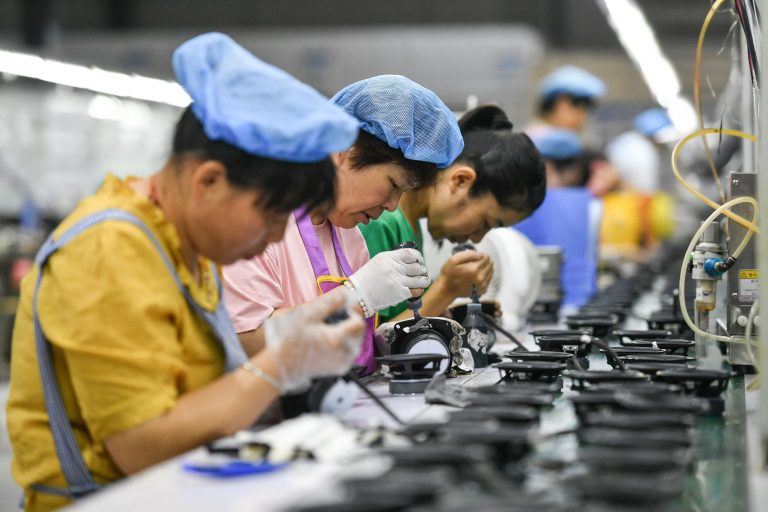The longstanding dispute over the future of semiconductors between the world’s top two powers — China and the United States — is intensifying, experts say. As a response, on June 3, Beijing implemented export controls on two significant raw materials — gallium and germanium — used widely in the global semiconductor industry.
Gallium and germanium play a crucial role in the semiconductor war, analysts noted. Last October, the Biden administration introduced export controls that prevented Chinese firms from purchasing advanced chips and chip-making equipment without a license — citing national security concerns. However, for these restrictions to have an impact, the U.S. required other principal suppliers from the Netherlands and Japan to step up and fill demand.
Analysts at financial consulting firm, Jefferies, consider this move to be a significant counteraction in the tech conflict, likely resulting from the potential U.S. tightening of its AI-chip prohibition. Prior to this, China sanctioned Micron Technology — a significant American memory chipmaker — in May, marking its first countermeasure.

Tightening measures
“We see this as China’s second, and much bigger, counter measure to the tech war, and likely a response to the potential US tightening of [it’s] AI chip ban,” said the analysts.
In response, China initiated a cybersecurity investigation into Micron in April, followed by the company’s ban from selling to Chinese companies involved in critical infrastructure projects. This was soon followed by restrictions on gallium and germanium exports.
Success
You are now signed up for our newsletter
Success
Check your email to complete sign up
RELATED: Business Report Highlights the Perilous Consequences of a Communist Chinese Invasion of Taiwan
Gallium, a soft, silvery metal, is used to create key materials in semiconductors and LEDs, while germanium, a hard, grayish-white, and brittle metalloid, is used in producing optical fibers that are most commonly used in electric lines, satellite image sensors, and high-speed computer chips.

“The economies of scale in China’s extensive and increasingly integrated mining and processing operations, along with state subsidies, have allowed it to export processed minerals at a cost that operators elsewhere can’t match, perpetuating the country’s market dominance for many critical commodities,” analysts from Eurasia Group said on July 4.
The analysts have drawn parallels between the export controls and China’s reported attempts in 2021 to limit rare earth exports — especially since mining and producing gallium and germanium (though not considered rare earth metals) can be costly.
Leading producer of rare earth metals
According to the U.S. Geological Survey, China is the leading producer of both gallium and germanium — accounting for 98 and 68 percent of global production, respectively. Eurasia Group analysts pointed out China’s dominance in these critical commodities due to its vast and increasingly integrated mining and processing operations, coupled with state subsidies.
In the aftermath of the export controls, shares of Chinese producers of these raw materials surged by 10 percent, while Australian rare earths producers also witnessed gains. The U.S., which imported over 50 percent of its gallium and germanium from China in 2021, is significantly dependent on China for these raw metal elements.

RELATED: Looming Electric Vehicle Battery Shortage Could Last Decades, Rivian CEO Warns
Analysts at Eurasia Group see China’s export controls as a warning — indicating China’s potential retaliatory measures against further restrictions on its access to high-end chips and tools. It could also play a role in upcoming discussions with U.S. Treasury Secretary Janet Yellen, they noted.
Though China’s move is significant, it is not yet considered catastrophic for the U.S. and its allies, most analysts predict. Alternative producers and substitutes for these minerals from the U.K., Belgium, Germany, and Japan are still available, and the U.S. imports large amounts of gallium and germanium from Europe.
Long-term ramifications
Despite the data, Wei Jianguo — a former deputy commerce minister — has warned that these restrictions could be “just the start” as China has more “retaliatory measures” at its disposal. Analysts agree — stating that if current actions do not alter already tense US-China dynamics, rare earth export controls could soon follow suit.
When China limited its rare earths export quota in 2010, it led to increased efforts by companies outside China to produce the metals — decreasing China’s global market share from 97 percent to around 60 percent in 2019.
RELATED: Chinese Govt. Statistics Admit to 20% Youth Unemployment Rate
Eurasia Group analysts have also cautioned that export restrictions could be a double-edged sword, leading to reduced availability, increased demand, and price surges. However, this could invigorate competition and make mining and processing ventures outside of China more attractive and economically viable for other countries.














